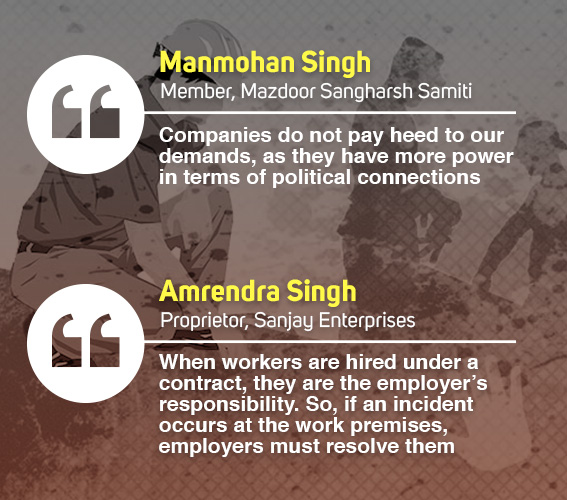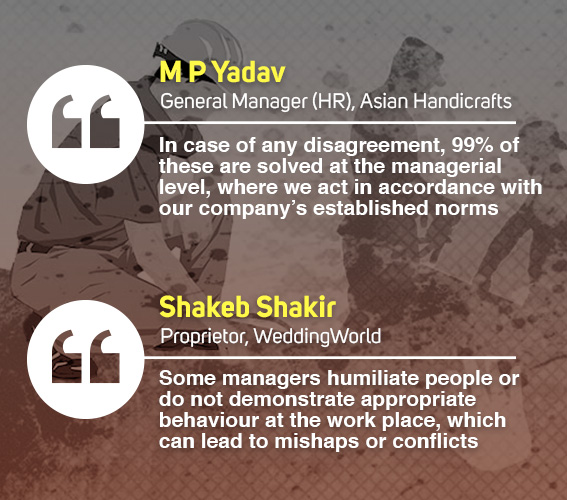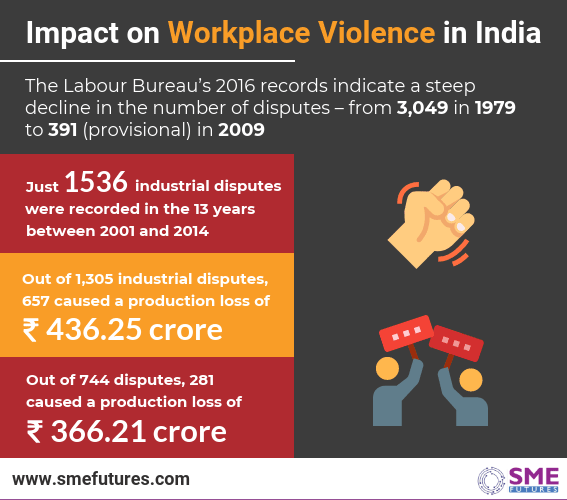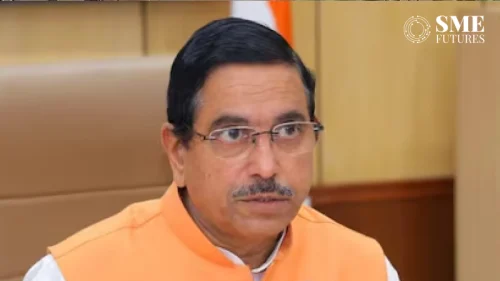As Binesh Sharma, HR head of Mitsubishi set out to his office, he could easily have met with the same fate that L K Chaudhary and Roy J George did several years ago when they were attacked by agitating workers. In 2008, Chaudhary, who was the India division chief executive officer (CEO) and managing director at Italian auto parts maker Graziano Trasmissioni Spa, was beaten to death by a mob of over 200 employees who had been dismissed from the company. Exactly one year later, George who was vice-president (HR) at auto instruments maker Pricol Ltd, was also lynched by a group of angry, recently retrenched staff. By contrast, Sharma, who was shot twice by an infuriated, sacked employee and survived, had been more fortunate.
These incidents are among several instances where violence at Indian companies has resulted in the death of several employees and/or managers. Two other notable recent cases include the indefinite strike by union workers at a Korean automobile company and an incident where two senior executives were burnt to death in a jute factory in West Bengal. These cases all highlight the deep impact that labour unrest has on the functioning of Indian enterprises.
An Indian paradox
Today, workers may often announce a strike under a common labour platform or a trade union when their demands are not met. For example, take the Mazdoor Sangharsh Samiti that was formed in Alwar, Rajasthan, in December 2016. The organisation initially consisted of employees from several companies, including Daikin AC, Toyoda Gosei, Ruchi Beer, Honda HMSI and Shriram Pistons. Subsequently, workers from Maruti Suzuki, Hero Motocorp, Mikuni, Nissin and Parle also joined the Mazdoor Sangharsh Samiti. The organisation’s goal was to press action against police atrocities committed on Honda employees who had been protesting the company’s harsh working conditions and indiscriminate disciplinary action initiated against Honda staff in February 2016.
A 2015 paper written by M Parameswaran “Determinants of Industrial Disputes: Evidence from Indian Manufacturing Industry” argues that labour laws in India grant excessive bargaining power to its labour force, thus increasing the likelihood of industrial disputes. However, this is contradicted by a sharp decline in industrial disputes in recent years, without any major change in related labour laws.
Statistical figures from the Union government’s Labour Bureau demonstrate a drastic decline in industrial disputes. According to its 1999 records, in 1997, about 1,305 industrial disputes were recorded in India. Of these, 657 disputes caused a production loss of INR 436.25 crore and 730 created a wage loss of INR 49.50 crore. In manufacturing, in the same year, 281 disputes out of 744 caused a production loss of INR 366.21 crore and 296 disputes resulted in a wage loss of INR 24.41 crore. The Labour Bureau’s 2016 records indicate a steep decline in the number of disputes – from 3,049 in 1979 to 391 (provisional) in 2009. In addition, just 1,536 industrial disputes were recorded in the 13 years between 2001 and 2014. The figure includes all disputes that have resulted in work stoppages involving 10 or more workers.
A journal article written by Ernesto Naronha and David Beale “Indian Public Sector Trade Unionism in Context: Gujarat and West Bengal Compared” throws further light on the disparity across states, explaining, “Indian trade unionism is fragmented due to traditionally strong political party allegiances. There may be some loosening of political loyalties as there is a weakening of union organisation nationally, partly related to decentralisation of collective bargaining. India’s scale and diversity pose immense challenges to the unions’ abilities to operate nationwide, and significant differences between states are evident in the patterns of investment, restructuring, industrial relations, trade unionism and state‑central government relations.”
Yet, on record, the number of industrial disputes have clearly decreased, even though the period between 2008 to 2011 has the reputation of being a period marked by labour unrest, involving India’s best known large enterprises across industries. Take the 2011 lock out at General Motor’s Halol plant in Gujarat, where at least 900 workers demanded a wage hike and better working conditions, shutting the plant down and causing a production loss of over 1,500 units. At the same time, MRF tyres also locked out its Kottayam plant in Kerala after workers’ unrest due to the suspension of a labourer, while Hindustan National Glass Industries Ltd closed its factory when management suspended a worker after a violent incident at its Rishra unit in West Bengal. During this period, the other large enterprises that were impacted by labour unrest included Maruti, Voltas, Moser Baer, Pepsico, Bosch, Rico Auto Ltd, Mahindra & Mahindra, Nestle, Toyota Kirloskar Motors, Honda and Haldia Dock complex. Hindalco’s Kochi unit was shut down for almost 10 months after workers demanded a hike in wages.
And, while figures indicate a reduction in disputes, labour agitations in large industries continue. Take the case of Manmohan Singh who worked in Daikin and was a member of the Mazdoor Sangharsh Samiti, who is still fighting for his rights. Singh was terminated after the 2016 agitation in the organisation, where he actively participated in the formation of the trade union. Now jobless, he says, “All our demands have not been met yet. Among the employees who were terminated, some of them are back at work due to external pressure. But, most of them are still jobless or are doing something else. Companies do not pay heed to our demands, as they have more power in terms of political connections.”
Yet, despite these hurdles, an organisation such as Mazdoor Sangharsh Samiti still has more than 1,000 members who are connected to different companies. And while industrial disputes may be on the decline, trade union activism is clearly still alive, both in large enterprises and smaller companies.
How SMEs handle labour unrest
Yet the changing industrial scenario, liberalisation, privatisation and globalisation have all transformed employer-employee relationship today. While continuous economic liberalisation and improving industrial relations reforms have led to greater flexibility in employment, an increase in mid-size businesses has halted the trade union movement and increased managerial power.
The changing landscape is reflected in a conversation with Amrendra Singh, the proprietor of Sanjay Enterprises, based in Ghaziabad in Uttar Pradesh, which provides labourers on a contract basis to small and medium enterprises. While Sanjay Enterprises deploys these labourers in different cities, their families receive a monthly salary at home and workers get pocket money to meet their daily needs. Discussing the resolution of any workplace conflicts that might arise Amrendra says, “We work on strict norms and there is always proper documentation. When workers are hired under a contract, they are the employer’s responsibility. So, if an incident occurs at the work premises, employers must resolve them. But, if conflicts and arguments occur outside the work premises, it is our responsibility to mediate.” Clearly, when it comes to such small manufacturing units, these organisations deal with internal feuds at a personal level.
M P Yadav, who works as the general manager (HR) at Asian Handicrafts situated in Gurgaon, confirms the pattern. Asian Handicrafts has been manufacturing and exporting Indian handicrafts and fashion jewellery for over 39 years. It currently has more than 350 employees, who mainly work on manufacturing artwork or packaging. He says, “As far as I know, there are no incidents of violence in our organisation. However, it is part of human nature to argue, and we cannot prevent that. But, in case of any disagreement, 99 per cent of these are solved at the managerial level, where we act in accordance with our company’s established norms. We also have working groups, like a grievance committee and a welfare committee, that attend to workers’ concerns.”
Another mid-size factory owner in Moradabad in Uttar Pradesh Shakeb Shakir exports and manufactures high-quality handmade modern art and craft products. He speaks on conflict resolution among factory workers, saying, “My organisation has 24 employees. When it comes to their workplace concerns, we take matters into our hands from the beginning and solve matters on our own.” He adds that most small businesses deal with fewer conflicts since they have a lesser number of employees.
Owners’ Troubles
An industry source who runs his own manufacturing unit in Delhi throws light on the employer-employee relationship in factories, saying “We invest our time in training people if they are not skilled, but it is really hard to trust and retain people today. Once they are trained, they tend to move on, and this takes a toll on us. There have also been instances where labourers have been involved in robberies at factories. Another problem is absenteeism, where labourers take an advance salary but do not show up at work. These problems create an extra burden for us while we run our factories.”
The major reason for several of these conflicts is communication gap. Units and factories often have intermediate bosses between workers and employers, and this creates a disconnect between workers and the management. If workers need some help or guidance, there is no channel for face-to-face communication with the ultimate boss or the director. Another problem is underemployment, where people are overqualified but are still hired to undertake menial jobs. Other factors that affect workplace harmony include differences in education levels, perceptions, age, gender or marital status.
Subramanian Iyer, general manager (HR) at Vijay Tanks and Vessels Private Limited in Vadodara recommends that organisations should not underestimate the power of workers in a union. He says, “Humans are emotional beings. If workers’ emotions are regularly provoked, it will lead to labour unrest. Instead, we must understand the causes behind workers’ dissatisfaction and present a concrete proposal that addresses these concerns to the union or its agitating workmen.”
Whenever an argument occurs, the obvious conclusion some people draw is that an organisation’s workers are at fault. However, it is usual to note that bosses or managers are in the wrong too. Factory proprietor Shakir says, “People have a tendency to mock others. Some managers humiliate people or do not demonstrate appropriate behaviour at the workplace, which can lead to mishaps or conflicts.” He further says that managers should investigate the causes behind conflicts and try to solve them. Problems differ in every organisation and the same solution framework cannot be applied across the board.
Further, in today’s scenario, labourers are more educated and aware of their duties and rights. They expect the basic amenities at their workplace. Bikram Keshari Patasahani, general manager (HR) at Jindal Steel & Power Ltd in Angul says on a social media platform: “Workers today want a clean living environment, timely wage payment, and fair redressal of their grievances. Managers should have meetings with them at regular intervals, give them frequent pep talks and understand the pulse of an organization. This will avoid feuds on the shop floor or at least forewarn managers about an impending crisis. But once a conflict occurs, intervention can only be limited to negotiation.”
What employers can do
There may not be a clear solution to resolve labour unrest or shop floor conflicts, as each organisation has different problems and might require strategies that are targeted at its specific areas to resolve these challenges. But, communication is the key for growing labour relations among people and employers. It is also important to build working committees that document and communicate with workers, while making their employees aware of the additional benefits that have been provided to them and the cost involved. Finally, HR strategists suggest, asset identification is an important step in clearing the air. For instance, managers must identify potential ringleaders of any labour agitation and bring such individuals into their confidence, as they are the ones who can both create and contain all workforce unrest.
Also read: Nascent social entrepreneurship sector in India is beginning to look at women leaders for growth













